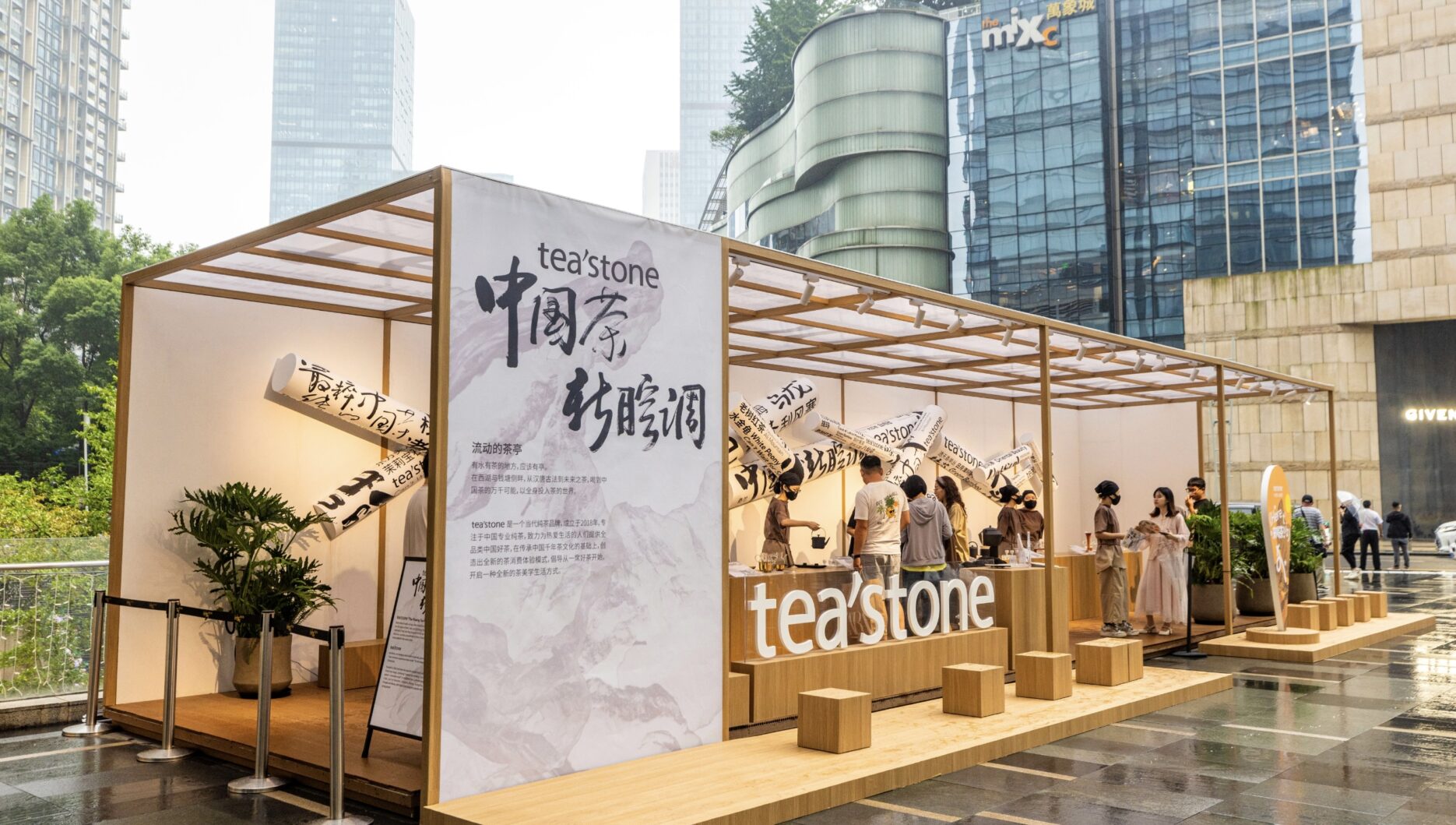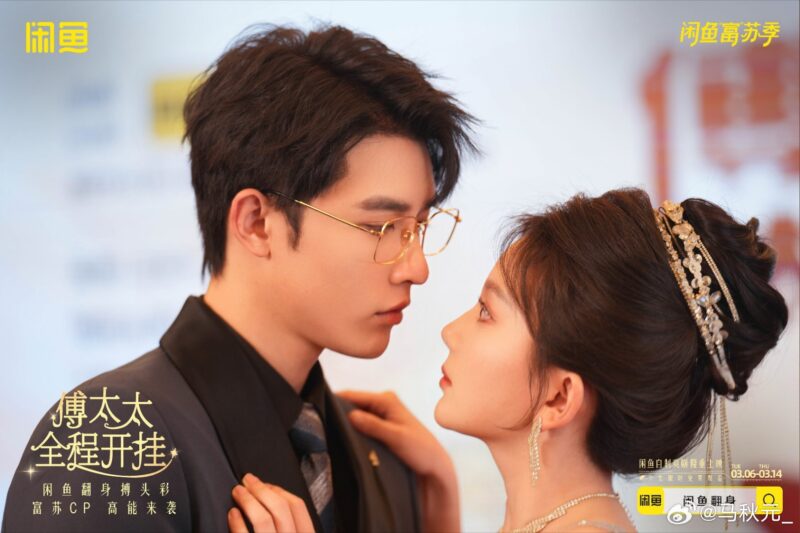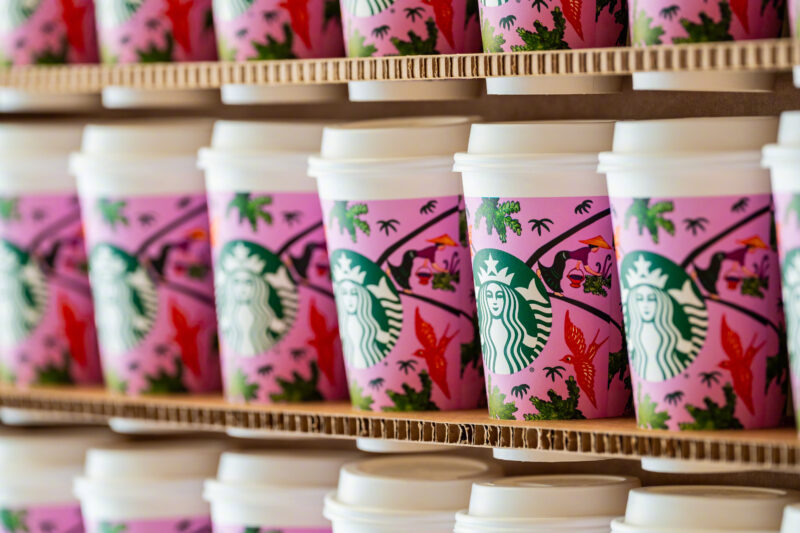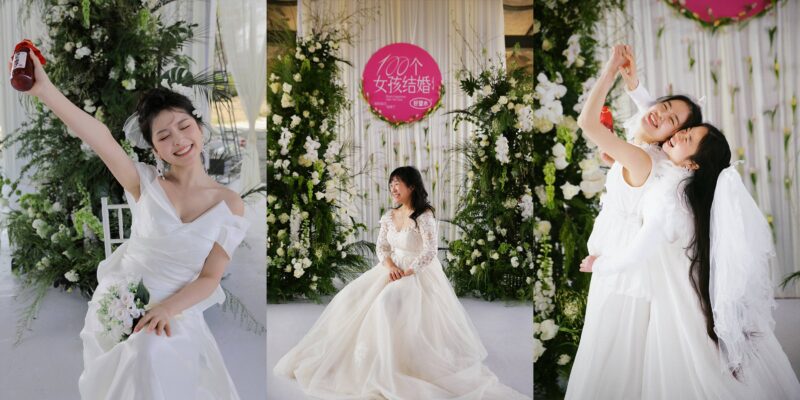Key takeaways:
- Tea’stone, although keeping a relatively low profile, is steadily expanding, attracting the lifestyle-centric “xiaozi” crowd like Starbucks did.
- Large and stylish locations is one of its main draws, including a “third place” like Starbucks, but in a more aesthetically designed way.
- Its products combine influences of tradition and modernity while its marketing focuses on the offline experiences and membership online.
It’s been 2 years since we introduced the then hot new tea house Tea’stone. With no high-profile campaigns and collaborations like its competitors, it seems the chain has stayed relatively under the radar. However, it has been steadily expanding, opening a new branch in both Shanghai and Nanjing since the beginning of 2024, reaching around 15 locations across the country.
However, to many, the chain remains niche and mysterious. Founded in 2018, the chain is known for its expansive tea house spaces and tasteful design of products, as well as high prices. But how does Tea’stone build its brand with an “anti-” or “de-marketing” approach? How does it balance the emphasis of its offline and online presence? And why do people keep comparing it with Starbucks?
The discreet charm of the petite bourgeoisie
The comparison between Tea’stone and Starbucks requires some context. The first one is the idea of “xiaozi” (小资, lit. petite bourgeoisie). According to Wikipedia, “xiaozi” is a lifestyle chasing modern taste, living standards, and arts. When Starbucks entered China, the coffee-exclusive space, including the service involving baristas taking your names, the music and the coffee itself became symbols of this modern, cosmopolitan and urbanite lifestyle.
Tea’stone emerged, its focus on design, on creating a “third place” outside home and work all pointed to the “xiaozi” tastes
Although Starbucks is now shifting focus to the innovative localisation of products and experimenting with collaborations to compete with the likes of Luckin, to some, the lifestyle roots still stand. That is why when Tea’stone emerged, its focus on design, on creating a “third place” outside home and work all pointed to the “xiaozi” tastes and was inspired by Starbucks.
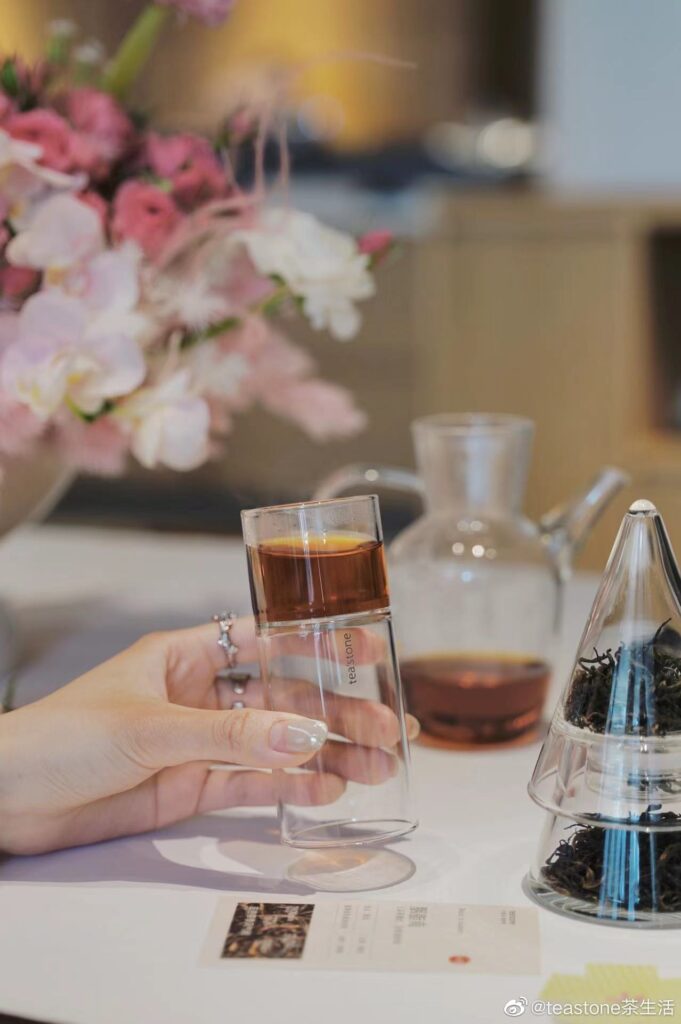
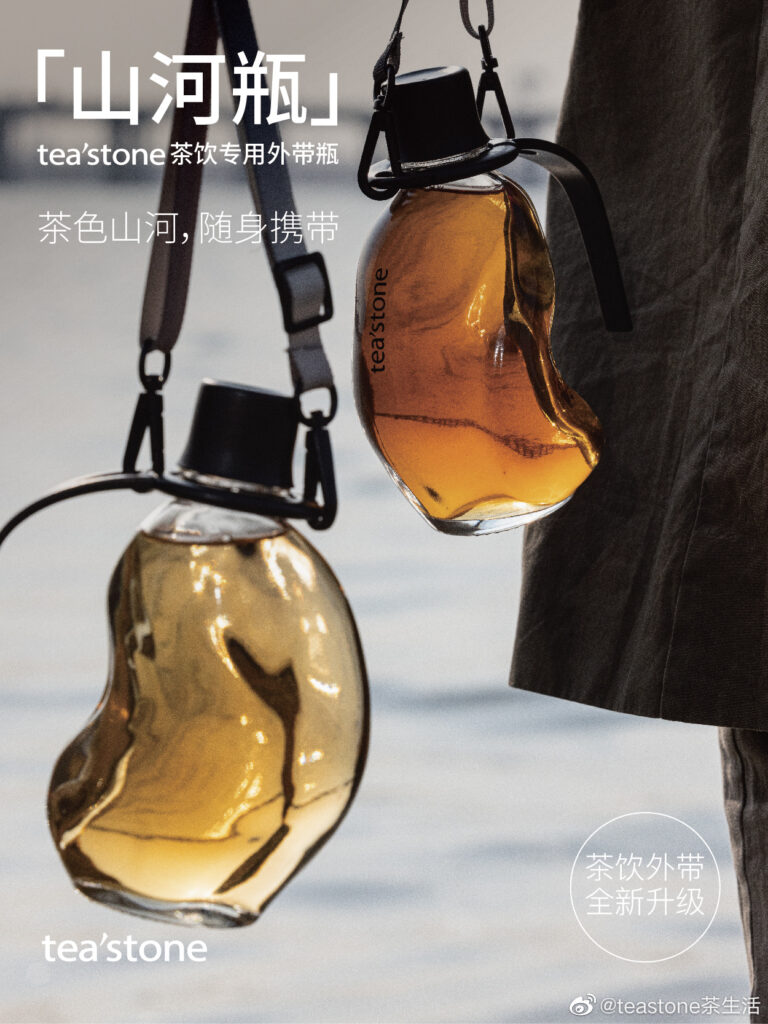
The pricing, on the other hand, elevates it to a premium lifestyle sometimes associated with xiaozi. At 168 RMB (23.24 USD) for a pot of tea or its latest campaign of 298 RMB (41.22 USD) for a set of rose tea (containing a whole rose blossom) and its signature bamboo-inspired glass with “free gifts” of a scarf and basket, Tea’stone differentiates itself from the likes of Luckin’s 9.9 RMB (1.37 USD) coffees.
Teahouse
Tea’stone is known for its huge 200 sqm – 400 sqm branches. Some commentators jokingly say each Tea’stone can hold 10 Luckin locations. Each of its locations has a localised design, either inspired by the natural views such as the Shanghai Xintiandi branch or the modern interpretation of a traditional tea stall in Chengdu. Having worked in real estate advertising, the Tsinghua-graduate founder Li Shu understands how space and location would affect the experience and the brand.

The brand also boasts a “light museum” experience at its locations not to mention selecting 108 tea breeds out of over 11,200 in 18 areas across China, including rare teas like the “yellow tea” that only has 0.2% of the market share. This builds exclusivity for the brand but with artefact-themed containers such as bamboo-inspired glass, and the museum-like quality enhances the immersive tea experience.
The museum-like quality enhances the immersive tea experience
The chain focuses on higher-tier cities as it aims for a certain lifestyle with its “third place” appeal. However, finding shopping areas with enough space to hold such large establishments can be a limitation for location and expansion. Tea’stone is among the earlier adoptees of the idea of a “tea house” as a space for its customers to stay in. Nayuki, Hey Tea and Sexy Tea have all since moved in that direction.
New Chinese Style? More like Chinese, but a new style!
When we last reported on Tea’stone, the New Chinese Style wasn’t a thing yet. Tea’stone was grouped with Hey Tea and Nayuki as the “new style” tea from China. However, the focus on non-milk teas seems to make Tea’stone stand out as a standard bearer of tradition, but it also takes explicit Western influences such as beer, brandy and champagne style fusion drinks.
Tea’stone prides itself on its immersive experiential marketing
The brand famously adopts a “de-marketing” approach to its marketing. A lot of its efforts are aimed at in-store design for interiors, products, containers and utensils. Tea’stone prides itself on its immersive experiential marketing. Offline events and pop-ups are also part of Tea’stone’s marketing arsenal.
Online, the brand has a moderate presence on social media platforms including Xiaohongshu (RED) and Weibo but is more focused on membership and private channels such as the WeChat Mini Program. The perks, including exclusive content for members and streamlined functions on the platforms, are the focus of the brand. Tea’stone’s membership reached over 200,000 when it had only 5 locations. In this way, Tea’stone is indeed building a luxury experience as a premium brand, aiming at the “xiaozi” crowd.




